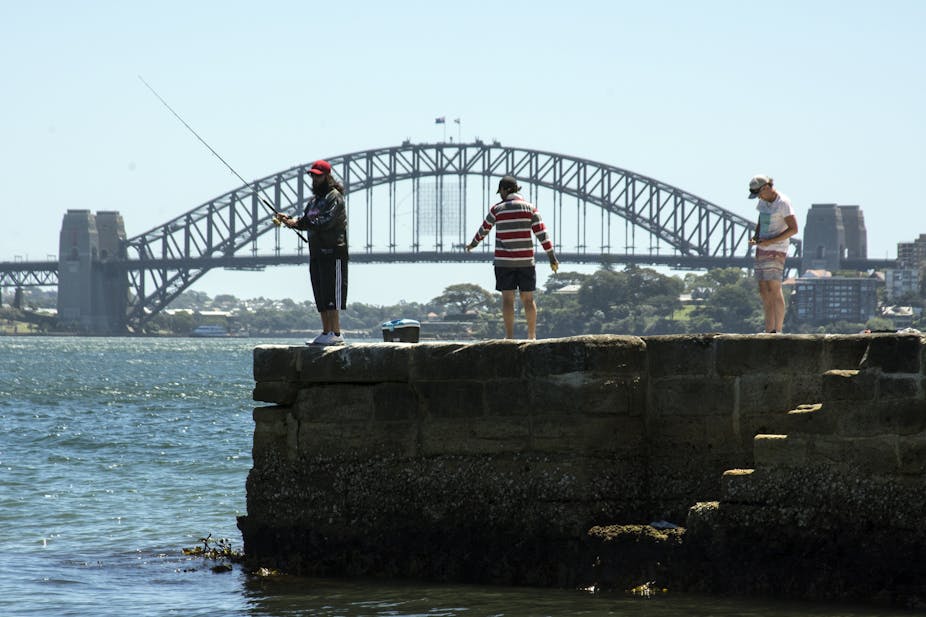As thousands gather for the World Parks Congress in Sydney, there are growing calls for a new marine park in Sydney Harbour. New South Wales’s Labor opposition has promised, if elected, to establish the park, and there is speculation the state government will announce its own plan at the congress.
But marine parks have proved controversial in NSW, culminating in sanctuary zones (where fishing was banned) being opened to recreational fishers last year.
Meanwhile, the federal government is reviewing the management of Australia’s commonwealth marine parks. New management plans proposed under the previous Labor government have been suspended, effectively leaving a system of parks “on paper”, with little protection.
So how can we get marine parks right?
Why fishers don’t like marine parks
Allowing recreational fishing in sanctuary zones is the latest move in the troubled history of NSW marine parks. Since 2009 we’ve seen three reviews, marine parks transferred from the state environment department to primary industries, a moratorium on new marine parks, and disbanding of the Marine Park Authority.
There has also been a shift away from using marine parks to insure against potential future threats such as unforeseen changes in fishing technology and growing coastal populations (known as a “precautionary approach”) to justifying the need for marine parks by assessing current threats and risks.
What went wrong?
First, the success of marine parks is often judged on the proportion of parks set aside as “sanctuary” or “no-take” zones, where fishing is prohibited.
But there is no scientific agreement on just what this figure should be. Opponents of fishing bans argued that these targets were being used in places, such as beaches, where there a few if any known threats to biodiversity. They are also home to mostly migratory species, unlikely to benefit from fishing bans in small areas.
Second, people had negative experiences with marine parks. In interviews recreational, commercial and Indigenous fishers reported more inconvenience and less enjoyment, negative effects on livelihoods, lifestyle and well-being, and negative impacts on their practice of culture. This fuelled opposition to marine parks.
Instead of doing a dedicated social impact assessments, the government simply did consultations and public discussions. And economic forecasts didn’t capture the individual importance of particular traditions, places, food items, or cultural practises.
Third, the case against marine parks was led by a vocal minority, heavily grounded in ideology and politics. Community surveys reveal that the majority of coastal communities support bans on fishing in marine parks. But these views were likely discouraged by louder voices.
What does the science say?
Fishing bans are justified scientifically on protecting marine wildlife and ecosystems. But some marine scientists argue that this approach unfairly targets fishing as the major threat to marine biodiversity when, in fact, there are a range of threats and fishing can be managed to be ecologically sustainable.

Marine parks were justified by evidence from other countries of the impacts of over-fishing, and evidence that, globally, no-take zones work. But there was a lack of local NSW evidence.
Although the scrutiny was justified, it overshadowed debate about the other values of no-take zones:
Protecting critical habitats (such as spawning sites and sites important for threatened species)
Maintaining undisturbed reference sites for research, education, monitoring
Providing wilderness experiences.
Instead of justifying the need for marine parks for biodiversity conservation, many marine park proponents argued that banning fishing in some areas would lead to more fish for fishers in others. There was, however, little evidence for these benefits, and none from NSW.
Where to from here?
The past five years in NSW show that marine parks need both ecological justification (for the fish) and social acceptance (for the fishers) — also known as social license.
Here are four ways to make things better:
Assess the costs and benefits of marine parks: ecological, social and economic, all in one
Consult a range of views, not just the loud voices
Make marine parks not just about marine wildlife, but about fishing too. So a marine park could conserve a spawning area of a favourite local fish
Analyse the impact of only assessing current threats and risk, as opposed to potential future threats and risks such as growing coastal populations and urban spread.
When thinking about new marine parks, we need to translate the scientific knowledge that we have into socially acceptable responses, and incorporate social, cultural and economic knowledge into the existing suite of biological knowledge.
We also need to get better at explaining how marine parks affect different people. This may ultimately mean being flexible and open minded about the best long term means of protection within marine parks.
But unless we do this, we will continue to see conflict in NSW’s and Australia’s marine parks.

